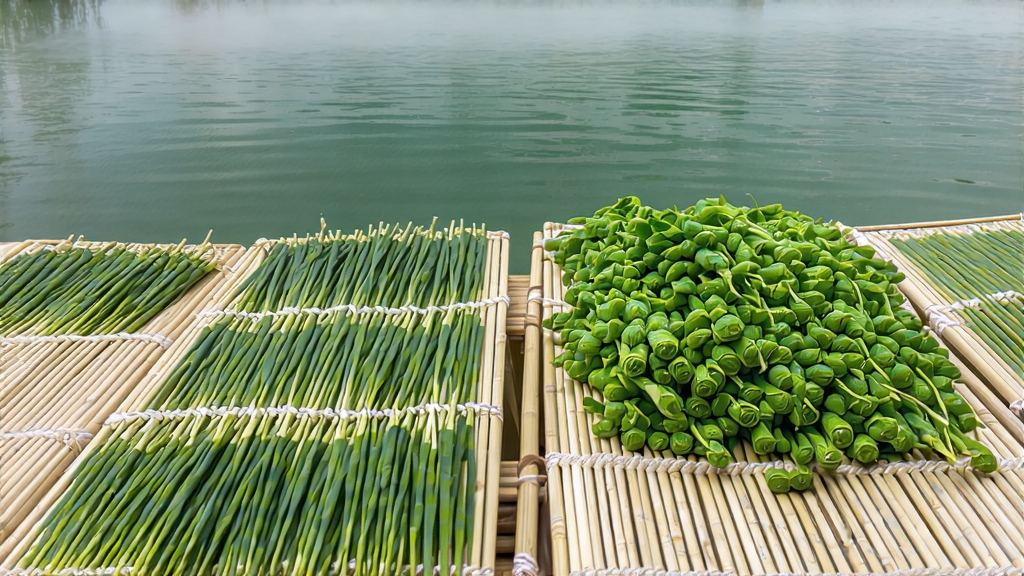
Tucked between the mist-laden hills of Dongting Mountain and the gentle ripples of Taihu Lake, Biluochun—literally “Green Snail Spring”—has been seducing tea drinkers since the late Ming dynasty. Legend claims a tea picker startled by a sudden dragon curled the leaves so tightly in her palm that they emerged as miniature spirals; imperial scholars later renamed the tea “Scary Fragrance” because its perfume drifted farther than any blossom. When the Kangxi Emperor tasted it in 1699 he found the name inelegant and rechristened it Biluochun, referencing both its snail-shell shape and the spring season that gifts the sweetest buds. Thus a humble mountain tea entered the palace and, eventually, the global stage.
Although all Biluochun hails from Jiangsu Province, terroir divides it into two camps. The original “Dongting” style grows on the lake’s two islands, Dongshan and Xishan, where peach, plum and loquat trees interlace with tea bushes; their shared pollinators give the leaf a natural fruity-floral top note impossible to replicate elsewhere. “Suzhou-style” gardens on the nearby mainland mimic the mist and biodiversity, while “Jiangsu large-leaf” plantings stretch northward, yielding a bolder, slightly astringent cup. Purists insist only island tea deserves the ancient name, yet each expression offers a window onto the same craft.
Plucking begins when two leaves and a downy bud are still shorter than a fingernail—ideally before the Qingming festival when spring chill concentrates amino acids. Pickers work at dawn so that mountain mist keeps the leaf supple for the arduous kneading ahead. Within minutes of harvest the fragile shoots are spread under shade cloth; any delay oxidizes the green into dull olive. The first wok, heated to 180 °C, is a thirty-second “kill-green” shock that locks chlorophyll and vaporizes grassy off-notes. A quick toss, a deft roll across the bamboo rib, and the leaf is already perfuming the room like warm apricot. Temperature drops to 80 °C for the second wok, where the master’s fingertips press and twist the leaf against the iron, coaxing it into the signature spiral. One slip and the bud snaps; one extra second and the downy hairs char, so rhythm is dictated by the sizzle itself. After ten minutes the leaf has lost sixty percent of its moisture and resembles tiny jade snails. A final gentle bake over charcoal embers—no flames, only the breath of glowing bamboo—dries the core while preserving surface silvery down. From 5 kg of fresh pluck barely 1 kg of finished tea remains, each gram containing roughly 1,200 hand-turned curls.
Western drinkers often treat green tea like black, drowning it with boiling water and wondering why bitterness dominates. Biluochun demands the opposite: restraint. Begin with a tall, thin glass so the spirals can be observed unfurling—a performance nicknamed “the green dance.” Pre-warm the glass to 70 °C, then add 3 g of leaf (a level teaspoon) before tilting the glass and pouring 200 ml of water down the side, avoiding direct impact on the curls. Within thirty seconds the downy hairs release a shimmering halo; buds stand upright, then slowly sink like submarine periscopes. Steep no longer than ninety seconds for the first infusion; subsequent steeps lengthen by thirty seconds. Fourth infusion still tastes of sweet peas, proof of high amino content. If gongfu style is preferred, use a 120 ml gaiwan, 4 g leaf, flash infusions of 20–40 s at 75 °C; the compressed leaf rewards speed with layers of orchid, persimmon and steamed edamame.
To evaluate a sample, start dry. Premium Biluochun appears uniformly moss-green with abundant white tips; any yellow flecks betray over-firing. Bring the leaves to your ear and shake—rustling should be soft, almost silky, indicating residual moisture below seven percent. Infuse, then lift the wet leaves on a white spoon: intact spirals, not broken flakes, signal careful hand-processing. Aroma should ascend immediately, a duet of lychee and fresh cream; if you detect roasted chestnut the tea is edging into pan-fire oolong territory. On the palate, sweetness should arrive before any astringency, coating the tongue like light custard